Countries in Eastern Africa
How Many Nations in Eastern Africa
Located in east part of Africa, Eastern Africa is composed of 18 countries. Here is an alphabetical list of all countries in East Africa: Burundi, Comoros, Djibouti, Eritrea, Ethiopia, Kenya, Madagascar, Malawi, Mauritius, Mozambique, Rwanda, Seychelles, Somalia, South Sudan, Tanzania, Uganda, Zambia, and Zimbabwe. Among them, Mozambique belongs to the PALOP (Portuguese Speaking African Countries).
1. Burundi
Burundi is a state in East Africa bordering Congo-Kinshasa, Rwanda and Tanzania.
 |
|
2. Comoros
 |
|
3. Djibouti
Djibouti is a state in East Africa in the Horn of Africa and borders Eritrea in the north, Ethiopia in the west and northwest and in the south Somalia. The country is the third smallest on the African mainland and more than 750,000 people live in Djibouti.
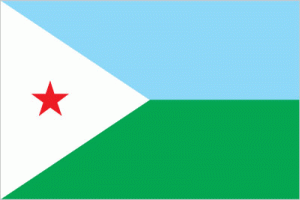 |
|
4. Eritrea
Eritrea is a state in East Africa on the Red Sea and borders Djibouti, Ethiopia and Sudan. The name Eritrea comes from the Greek name for the Red Sea Erythra thalassa.
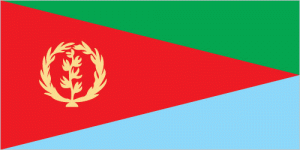 |
|
5. Ethiopia
Ethiopia is located on the Horn of Africa in northeastern Africa. Ethiopia is Africa’s third most populous country.
 |
|
6. Madagascar
Madagascar, formally the Republic of Madagascar, is a state located on the island of Madagascar in the Indian Ocean, east of southern Africa. The island is to the surface the world’s fourth largest.
 |
|
7. Malawi
Malawi, formally the Republic of Malawi, is a state in southern Africa bordering Mozambique to the east, Tanzania to the east and north, and Zambia to the west.
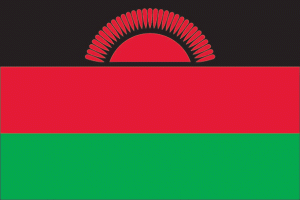 |
|
8. Mauritius
Mauritius, formally the Republic of Mauritius, is an island nation in the Indian Ocean. It is located east of Madagascar, about 1,800 km from the African coast.
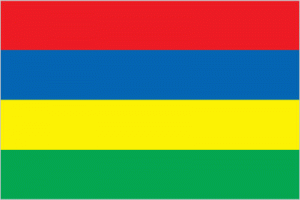 |
|
9. Mozambique
Mozambique, formally the Republic of Mozambique, is a republic in southeastern Africa. The country is located on the Indian Ocean and is separated from Madagascar in the east by the Mozambique Channel.
 |
|
10. Kenya
Kenya, formally the Republic of Kenya is a state in East Africa, on the Indian Ocean, bordering Ethiopia, Somalia, South Sudan, Tanzania and Uganda.
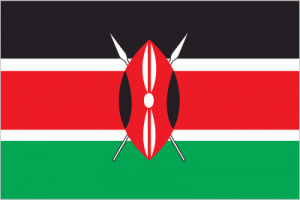 |
|
11. Rwanda
Rwanda, formerly Rwanda, formally the Republic of Rwanda, is a state in Central Africa bordering Burundi, Congo-Kinshasa, Tanzania and Uganda. It is Africa’s most densely populated country.
 |
|
12. Seychelles
The Seychelles, formally the Republic of the Seychelles, is a state in the western Indian Ocean, off the east coast of Africa, consisting of about 90 islands. Official languages are French, English and Seychelles Creole.
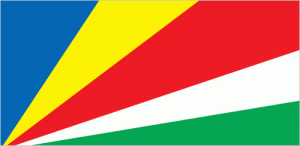 |
|
13. Somalia
Somalia, formally the Federal Republic of Somalia, is a country in the Horn of Africa bordering Djibouti in the north, Ethiopia in the west and Kenya in the southwest. In the north, the country has a coastline towards the Gulf of Aden and in the east and south towards the Indian Ocean.
 |
|
14. Tanzania
Tanzania, officially the United Republic of Tanzania is a state in East Africa bordering Kenya and Uganda in the north, Rwanda, Burundi and Congo-Kinshasa in the west and Zambia, Malawi and Mozambique in the south. To the east, the country has coastline to the Indian Ocean.
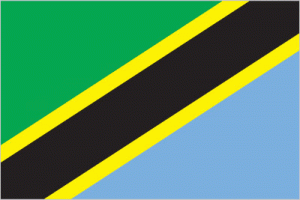 |
|
15. Uganda
Uganda, formally the Republic of Uganda, is a landlocked state in East Africa. The country borders Congo-Kinshasa to the west, South Sudan to the north, Kenya to the east, Tanzania to the south and Rwanda to the southwest. The border with Kenya and Tanzania runs partly through Lake Victoria.
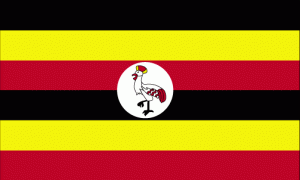 |
|
16. Zambia
Zambia, formally the Republic of Zambia, is a coastal state in southern Africa, bordering Angola in the west, Congo-Kinshasa and Tanzania in the north, Malawi in the east, and Mozambique, Namibia, Botswana and Zimbabwe in the south.
 |
|
17. Zimbabwe
Zimbabwe, officially the Republic of Zimbabwe, formerly Southern Rhodesia, is a coastal state in southern Africa bordering Botswana, Mozambique, South Africa and Zambia.
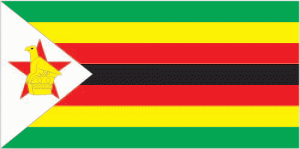 |
|
Countries in Eastern Africa by Population and Their Capitals
As noted above, there are eighteen independent countries in the Eastern Africa. Among them, the largest country is Ethiopia and the smallest one is Seychelles in term of population. The full list of Eastern African countries with capitals is shown in the table below, ranked by latest total population.
| # | Country | Population | Land Area (km²) | Capital |
| 1 | Ethiopia | 98,665,000 | 1,000,000 | Addis Ababa |
| 2 | Tanzania | 55,890,747 | 885,800 | Dar es Salaam; Dodoma |
| 3 | Kenya | 52,573,973 | 569,140 | Nairobi |
| 4 | Uganda | 40,006,700 | 197,100 | Kampala |
| 5 | Mozambique | 27,909,798 | 786,380 | Maputo |
| 6 | Madagascar | 25,263,000 | 581,540 | Antananarivo |
| 7 | Malawi | 17,563,749 | 94,080 | Lilongwe |
| 8 | Zambia | 17,381,168 | 743,398 | Lusaka |
| 9 | Somalia | 15,442,905 | 627,337 | Mogadishu |
| 10 | Zimbabwe | 15,159,624 | 386,847 | Harare |
| 11 | South Sudan | 12,778,250 | 644,329 | Juba |
| 12 | Rwanda | 12,374,397 | 24,668 | Kigali |
| 13 | Burundi | 10,953,317 | 25,680 | Gitega |
| 14 | Eritrea | 3,497,117 | 101,000 | Asmara |
| 15 | Mauritius | 1,265,577 | 2,030 | Port Louis |
| 16 | Djibouti | 1,078,373 | 23,180 | Djibouti |
| 17 | Comoros | 873,724 | 1,862 | Moroni |
| 18 | Seychelles | 96,762 | 455 | Victoria |
Map of East African Countries

Brief History of Eastern Africa
Early Human Habitation
Eastern Africa, often referred to as the cradle of humanity, has a rich history that dates back to the earliest human ancestors. The Great Rift Valley, which runs through the region, is home to some of the oldest hominid fossils, including the famous “Lucy” (Australopithecus afarensis), discovered in Ethiopia in 1974 and dating back about 3.2 million years. This region provides crucial insights into human evolution and the development of early societies.
Ancient Civilizations
The history of organized societies in Eastern Africa dates back thousands of years. One of the earliest civilizations was the Kingdom of Kush, located in present-day Sudan. This powerful state emerged around 2500 BCE and became a dominant force in the region, often rivaling Ancient Egypt. The Kushites left behind significant archaeological sites, including pyramids at Meroë, reflecting their advanced culture and trade connections.
In Ethiopia, the Kingdom of Aksum rose to prominence around the 1st century CE. Aksum was a major trading empire, with its capital near present-day Axum. The Aksumites were known for their monumental obelisks, the adoption of Christianity in the 4th century under King Ezana, and their role in regional trade networks connecting Africa, the Middle East, and Asia.
The Swahili Coast
From the 7th century onwards, the Swahili Coast emerged as a significant cultural and economic region. Stretching along the eastern coastline from Somalia to Mozambique, the Swahili Coast became a hub of trade and cultural exchange. The Swahili city-states, including Kilwa, Mombasa, and Zanzibar, facilitated trade between Africa, the Middle East, India, and China. This period saw the blending of African, Arab, Persian, and Indian influences, creating a unique Swahili culture characterized by a distinct language and architectural style.
European Exploration and Colonial Era
European exploration of Eastern Africa began in the late 15th century with Portuguese navigator Vasco da Gama’s arrival on the coast in 1498. The Portuguese established a presence along the Swahili Coast, controlling key ports and disrupting existing trade networks. However, their influence waned by the 17th century, giving way to Omani Arab dominance, particularly in Zanzibar.
The 19th century marked the beginning of significant European colonization in Eastern Africa. The Berlin Conference of 1884-1885 formalized the partition of Africa, leading to the establishment of European colonies. Britain, Germany, Italy, and Belgium were the primary colonial powers in the region. Britain controlled Kenya and Uganda, Germany took over Tanzania (then Tanganyika), Italy colonized parts of Somalia and Eritrea, and Belgium ruled over Rwanda and Burundi.
Resistance and Independence Movements
The colonial period was marked by exploitation, resistance, and significant social change. Indigenous populations faced land dispossession, forced labor, and cultural suppression. However, the early 20th century saw the rise of independence movements across Eastern Africa. Leaders like Jomo Kenyatta in Kenya, Julius Nyerere in Tanzania, and Haile Selassie in Ethiopia spearheaded efforts for self-determination.
Ethiopia, under Emperor Haile Selassie, resisted Italian occupation during the Second Italo-Ethiopian War (1935-1937) and successfully restored its sovereignty. Other countries followed suit after World War II, with widespread nationalist movements pushing for independence. Tanzania gained independence in 1961, Kenya in 1963, Uganda in 1962, and Somalia in 1960. Rwanda and Burundi also achieved independence from Belgium in 1962.
Post-Independence Challenges
The post-independence period in Eastern Africa was characterized by both triumphs and challenges. Newly independent states faced issues such as political instability, economic difficulties, and social strife. In Uganda, Idi Amin’s brutal regime (1971-1979) led to widespread human rights abuses and economic decline. In Rwanda, ethnic tensions between Hutus and Tutsis culminated in the horrific genocide of 1994, which left an indelible mark on the nation.
Tanzania, under Julius Nyerere, pursued a policy of African socialism known as Ujamaa, emphasizing self-reliance and communal living. While it achieved some successes in education and healthcare, the economic model faced significant challenges and ultimately struggled to deliver sustained growth.
Economic and Social Developments
Despite these challenges, Eastern Africa has made significant progress in various areas. The region has experienced notable economic growth, driven by sectors such as agriculture, tourism, and telecommunications. Kenya, for instance, has become a leader in mobile technology and innovation, with M-Pesa revolutionizing mobile banking.
Efforts to improve infrastructure, healthcare, and education have also borne fruit. Countries like Ethiopia have invested heavily in infrastructure projects, including the Grand Ethiopian Renaissance Dam, which aims to boost energy production and economic development. Additionally, initiatives to promote regional integration, such as the East African Community (EAC), have sought to enhance economic cooperation and stability.
Contemporary Issues and Future Prospects
Today, Eastern Africa faces a range of contemporary issues and opportunities. Political instability and conflict remain challenges in some areas, such as South Sudan and parts of Somalia. However, there are also promising developments in governance and democratic practices. Ethiopia and Eritrea’s peace agreement in 2018 marked a significant step towards regional stability.
Climate change poses a major threat to Eastern Africa, impacting agriculture, water resources, and livelihoods. The region’s vulnerability to droughts and other extreme weather events necessitates urgent action to mitigate and adapt to these challenges.













































